Fashion Through The Ages is a captivating journey, and at mens-fashion.net, we’re dedicated to guiding you through its ever-evolving landscape, especially in menswear. From historical sartorial choices to contemporary styles, understanding fashion’s trajectory enables us to appreciate its impact and predict future trends. Discover how fashion has evolved, adapting to societal shifts, technological advancements, and cultural movements, influencing men’s personal style and expression.
1. Unveiling The Essence Of 1900s Menswear
The early 1900s laid the groundwork for modern menswear, blending formality with emerging trends.
The outset of the 20th century saw men’s fashion characterized by structured silhouettes and tailored elegance. Key elements included:
- Suits: The cornerstone of a gentleman’s wardrobe, suits were meticulously crafted with high-buttoning jackets and vests.
- Fabrics: Wool and tweed dominated, offering warmth and durability.
- Accessories: Bowler hats, pocket watches, and walking sticks completed the refined look.
The S-shape silhouette influenced women’s fashion, while men’s styles focused on functionality and class, setting the stage for future innovations.
2. How Did Menswear Change In The 1910s?
The 1910s marked a transition towards practicality due to World War I, impacting menswear in profound ways.
The decade brought significant changes:
- Military Influence: Uniforms inspired practical and functional designs.
- Fabrics: Durable materials like serge and khaki became popular.
- Simplified Styles: Suits became less ornate, favoring comfort and ease of movement.
World War I necessitated practical clothing for men, streamlining designs and emphasizing functionality, reflecting the era’s necessities.
3. Exploring The Roaring Twenties: Menswear Edition
The Roaring Twenties ushered in an era of exuberance and liberation, significantly influencing menswear.
The 1920s brought:
- Jazz Age Influence: Styles became more relaxed, reflecting the era’s vibrant nightlife.
- Fabrics: Lighter materials like linen and cotton gained popularity.
- Key Items: Wide-legged trousers, argyle sweaters, and fedora hats defined the look.
The flapper look for women had its counterpart in menswear, with looser fits and sportier styles, capturing the decade’s spirit of freedom.
4. What Defined Menswear In The 1930s?
The 1930s saw a return to classic elegance in menswear, influenced by Hollywood glamour and economic recovery.
The decade featured:
- Hollywood Influence: Silver screen icons like Cary Grant and Clark Gable set style standards.
- Fabrics: Refined materials like gabardine and silk blends were favored.
- Key Items: Double-breasted suits, wide-lapel jackets, and patterned ties epitomized the sophisticated look.
Men’s bias cut influenced elegance with its classic appeal, while menswear adopted refined styles, mirroring the decade’s sophisticated aesthetic.
5. How Did WWII Impact 1940s Menswear?
World War II brought austerity and practicality to the forefront of 1940s menswear.
Key aspects of the decade included:
- Utility and Rationing: Functional designs and limited resources shaped clothing choices.
- Fabrics: Durable materials like wool and cotton were used sparingly.
- Key Items: Military-inspired jackets, high-waisted trousers, and practical accessories defined the wartime look.
Utility clothing and military influences dominated, emphasizing functionality and resourcefulness in menswear during the war years.
6. What Were The Defining Menswear Trends Of The 1950s?
The 1950s brought a sense of optimism and conformity, reflected in the era’s menswear trends.
The decade featured:
- Conservative Styles: Clean-cut looks and traditional silhouettes dominated.
- Fabrics: Classic materials like flannel and tweed remained popular.
- Key Items: Gray flannel suits, polo shirts, and penny loafers defined the preppy, all-American style.
The 1950s conservative elegance and refined styles created a distinct look, characterized by clean lines and classic materials.
7. How Did The 1960s Revolutionize Menswear?
The 1960s ushered in a period of cultural revolution, significantly transforming menswear.
The decade was marked by:
- Youthful Rebellion: Styles became bolder and more expressive.
- Fabrics: Synthetic materials like polyester and vibrant colors gained popularity.
- Key Items: Slim-fitting suits, turtlenecks, and Chelsea boots epitomized the mod aesthetic.
The miniskirt trend for women had its counterpart in menswear, with bolder colors and slimmer fits, reflecting the decade’s rebellious spirit.
8. Exploring The Diverse Styles Of 1970s Menswear
The 1970s embraced a wide range of styles, from bohemian to disco, influencing menswear in diverse ways.
The decade saw:
- Eclectic Influences: Styles ranged from hippie to glam rock.
- Fabrics: Corduroy, denim, and polyester were commonly used.
- Key Items: Bell-bottoms, platform shoes, and leisure suits defined the era’s flamboyant style.
The wrap dress revolutionized womenswear. Menswear trends included bell-bottoms and platform shoes, reflecting the decade’s diverse influences.
9. What Trends Defined 1980s Menswear?
The 1980s embraced bold and extravagant styles, transforming menswear with vibrant colors and statement pieces.
The decade featured:
- Excess and Individuality: Styles were bold and expressive.
- Fabrics: Synthetics like nylon and spandex were popular.
- Key Items: Power suits with padded shoulders, tracksuits, and neon accessories defined the era’s over-the-top aesthetic.
The increasing popularity of fitness influenced a new type of elegance, with power suits and tracksuits, reflecting the decade’s bold and individualistic spirit.
10. How Did 1990s Menswear Reflect Casualization And Grunge?
The 1990s saw a shift towards casualization and grunge, influencing menswear with relaxed and anti-establishment styles.
The decade was marked by:
- Casual Styles: Relaxed fits and understated designs dominated.
- Fabrics: Denim, flannel, and cotton were staples.
- Key Items: Flannel shirts, baggy jeans, and sneakers defined the grunge and casual aesthetic.
Grunge fashion pioneered new styles, with relaxed fits and understated designs, reflecting the decade’s casual and anti-establishment ethos.
11. Exploring The Eclectic Trends Of 2000s Menswear
The 2000s brought an eclectic mix of trends, influenced by hip-hop, streetwear, and the rise of fast fashion.
The decade featured:
- Diverse Influences: Styles ranged from hip-hop to emo.
- Fabrics: Synthetics and blends were widely used.
- Key Items: Baggy jeans, tracksuits, and graphic tees defined the era’s diverse and often contrasting looks.
:max_bytes(150000):strip_icc()/070819-oc-style-embed-05-2000-1d1c2be65851475caa23257ac25fd8db.jpg)
Fashion’s rapid development and growing interest from pop culture brought new styles and silhouettes to the world. Celebrities and TV shows like The OC were style icons.
12. What Characterized 2010s Menswear?
The 2010s saw a resurgence of maximalism and a growing focus on sustainability, influencing menswear with bold styles and ethical considerations.
Key aspects of the decade included:
- Return to Maximalism: Bright colors and bold textures made a comeback.
- Fabrics: Sustainable and ethically sourced materials gained importance.
- Key Items: Slim-fit suits, statement sneakers, and athleisure wear defined the era’s blend of style and comfort.
13. Menswear In The 2020s: Comfort Meets Style
The 2020s have seen comfort and practicality take center stage, with a renewed focus on minimalism and sustainable choices in menswear.
The decade is characterized by:
- Comfort and Functionality: Practical and versatile clothing is prioritized.
- Fabrics: Sustainable and eco-friendly materials are increasingly popular.
- Key Items: Athleisure wear, minimalist designs, and classic pieces adapted for modern living define the contemporary look.
Minimalism helps maintain elegance and reduce environmental wastefulness. Menswear trends prioritize comfort and practicality.
14. How Has Sportswear Influenced Fashion Through The Ages?
Sportswear’s influence on fashion through the ages has been profound, consistently reshaping both casual and high-fashion landscapes.
Sportswear has evolved:
- Early 20th Century: Emerged as a distinct category with functional designs for activities like golf and tennis.
- Mid-20th Century: Became more integrated into everyday wear, with items like polo shirts and sneakers gaining popularity.
- Late 20th and Early 21st Century: Saw the rise of athleisure, blurring the lines between athletic and casual clothing.
Sportswear’s consistent integration into mainstream fashion highlights its adaptability and enduring appeal, significantly impacting how men dress today.
15. What Role Did Subcultures Play In Shaping Fashion Through The Ages?
Subcultures have significantly shaped fashion through the ages, each bringing unique styles and statements that reflect their distinct identities and values.
Subcultures have impacted fashion:
- 1920s Flappers: Challenged traditional norms with their boyish silhouettes and rebellious attitudes.
- 1950s Greasers: Embraced leather jackets and slicked-back hair, symbolizing youthful rebellion.
- 1960s Mods: Favored slim-fitting suits and sharp dressing, representing a stylish and sophisticated youth culture.
- 1970s Punks: Adopted ripped clothing and DIY aesthetics, expressing anti-establishment sentiments.
- 1990s Grunge: Popularized flannel shirts and worn-out jeans, reflecting a laid-back and anti-commercial attitude.
- 2000s Emo: Embraced skinny jeans and dark colors, conveying emotional and introspective themes.
These subcultures have consistently pushed boundaries, influencing mainstream fashion and allowing individuals to express their identities through clothing.
16. How Has Technology Impacted Fashion Through The Ages?
Technology has revolutionized fashion through the ages, transforming how clothing is designed, produced, and consumed.
Technology’s impact on fashion:
- Industrial Revolution: Introduced mass production, making clothing more accessible.
- Synthetic Fabrics: Enabled new designs and functionalities, expanding creative possibilities.
- E-commerce: Revolutionized retail, allowing consumers to shop from anywhere.
- 3D Printing and Wearable Tech: Pushed the boundaries of design and functionality, creating innovative garments and accessories.
As technology continues to advance, it promises to further transform the fashion industry, enhancing personalization, sustainability, and innovation.
17. How Has Globalization Affected Fashion Through The Ages?
Globalization has profoundly affected fashion through the ages, creating a more interconnected and diverse global style landscape.
Globalization’s influence:
- Cultural Exchange: Increased exposure to different cultures has led to hybrid styles and the incorporation of global influences.
- Manufacturing and Supply Chains: Production has become globalized, with clothing often made in various countries.
- Fast Fashion: Accelerated the pace of trends, making international styles quickly accessible worldwide.
- Digital Media: Social media and online platforms have connected designers and consumers globally, fostering a more inclusive and dynamic fashion community.
Globalization has democratized fashion, allowing for greater creativity and accessibility while also raising questions about sustainability and ethical production.
18. Key Fashion Icons Through The Ages
Fashion icons have significantly influenced style trends throughout history, inspiring generations with their unique looks and sartorial choices.
Here’s a list of key fashion icons:
| Era | Fashion Icon | Defining Style |
|---|---|---|
| 1930s | Cary Grant | Elegant suits and sophisticated accessories |
| 1950s | James Dean | Casual and rebellious with jeans and a white t-shirt |
| 1960s | The Beatles | Mod suits and distinctive hairstyles |
| 1970s | David Bowie | Glam rock with bold colors and avant-garde designs |
| 1980s | Prince | Extravagant and androgynous styles |
| 1990s | Kurt Cobain | Grunge with flannel shirts and ripped jeans |
| 2000s | David Beckham | Trendsetting casual and formal wear |
| 2010s-Present | Kanye West | High-fashion streetwear and innovative designs |
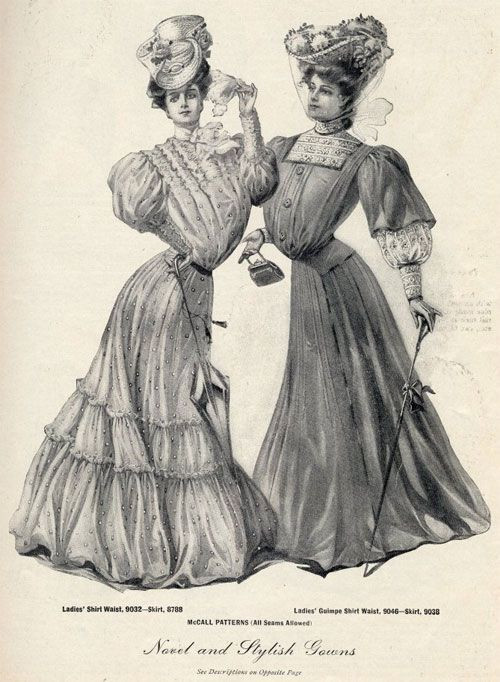
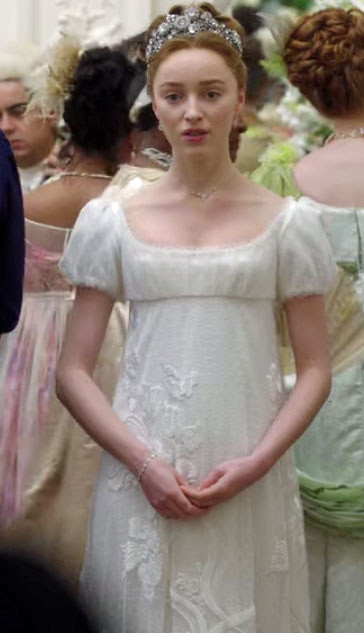
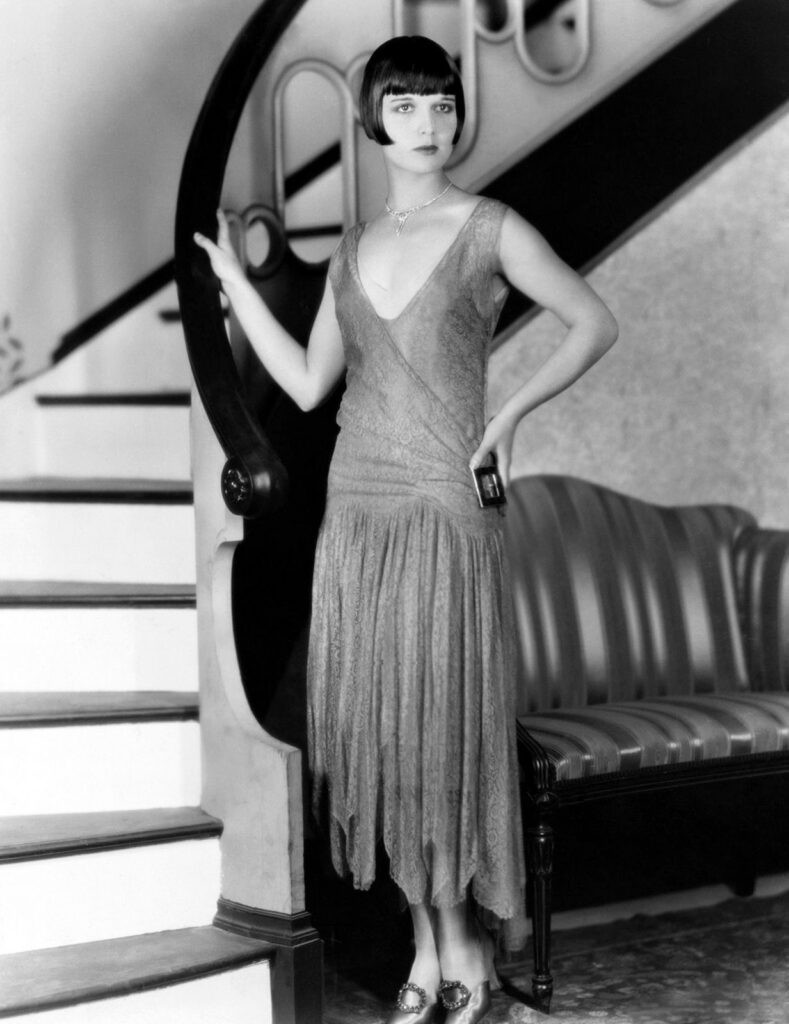
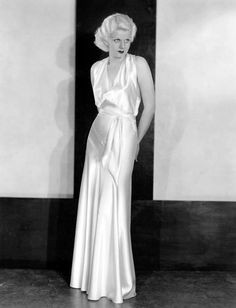


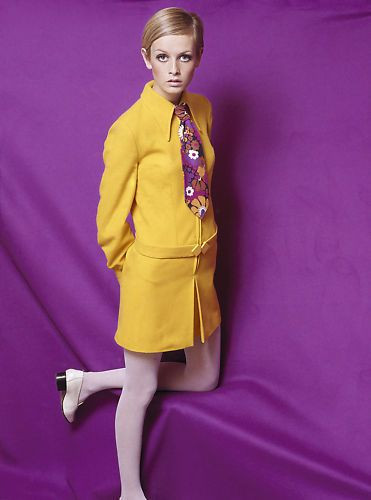

These icons have shaped fashion trends and continue to inspire contemporary style, making a lasting impact on menswear.
19. How Has Music Influenced Fashion Through The Ages?
Music has profoundly influenced fashion through the ages, with different genres and artists inspiring unique styles and trends that reflect cultural movements and attitudes.
Music’s impact on fashion:
- 1920s Jazz Age: Flapper dresses and zoot suits reflected the vibrant and liberated spirit of jazz music.
- 1950s Rock ‘n’ Roll: Leather jackets and jeans embodied the rebellious energy of rock music.
- 1960s British Invasion: Mod suits and Chelsea boots were inspired by the stylish British bands.
- 1970s Punk Rock: Ripped clothing, safety pins, and DIY aesthetics expressed the anti-establishment stance of punk.
- 1980s Hip Hop: Tracksuits, sneakers, and oversized logos reflected the urban and streetwise culture of hip hop.
- 1990s Grunge: Flannel shirts, ripped jeans, and combat boots mirrored the laid-back and alternative vibe of grunge music.
Each genre has brought its unique fashion elements, creating a dynamic interplay between music and style that continues to evolve.
20. Sustainability In Fashion: A Modern Overview
Sustainability in fashion has become a critical focus in recent years, driven by growing awareness of the industry’s environmental and social impact.
Key aspects of sustainable fashion:
- Eco-Friendly Materials: Use of organic cotton, recycled fabrics, and innovative materials like plant-based leather.
- Ethical Production: Ensuring fair labor practices and safe working conditions.
- Reducing Waste: Implementing practices like upcycling, recycling, and minimizing textile waste.
- Transparency and Traceability: Providing consumers with information about the origin and production process of clothing.
- Circular Economy: Promoting clothing rental, resale, and recycling to extend the life cycle of garments.
Sustainability in fashion is not just a trend but a necessary shift towards a more responsible and conscious industry.
21. How Does Mens-Fashion.Net Keep You Updated On Trends?
At mens-fashion.net, we strive to keep you updated on the latest trends and timeless styles, offering expert insights and practical advice to elevate your wardrobe.
Here’s how we help you stay informed:
- Trend Reports: In-depth analysis of emerging trends, providing context and styling tips.
- Style Guides: Comprehensive guides on building a versatile wardrobe, tailored to different occasions and personal styles.
- Designer Spotlights: Features on innovative designers and brands shaping the future of menswear.
- Shopping Guides: Curated selections of must-have items, with options for various budgets and preferences.
- Social Media Updates: Real-time updates on our social media channels, ensuring you never miss a beat.
With mens-fashion.net, you have a trusted resource for navigating the ever-evolving world of menswear.
22. How Can Understanding Fashion History Improve Your Personal Style?
Understanding fashion history can significantly enhance your personal style by providing context, inspiration, and a deeper appreciation for the evolution of menswear.
Benefits of understanding fashion history:
- Inspiration: Drawing ideas from past eras to create unique and personalized looks.
- Context: Appreciating the cultural and social influences that shaped different styles.
- Avoidance of Trends: Making informed choices based on timeless principles rather than fleeting trends.
- Confidence: Developing a strong sense of personal style rooted in knowledge and understanding.
By learning about fashion history, you can create a wardrobe that reflects your individuality and showcases your appreciation for the art of dressing well.
23. What Resources Does Mens-Fashion.Net Offer For Style Advice?
Mens-fashion.net offers a wealth of resources designed to provide expert style advice and inspiration for men of all ages and backgrounds.
Our resources include:
- Articles and Guides: In-depth articles covering a wide range of topics, from seasonal trends to classic wardrobe essentials.
- Lookbooks: Curated collections of outfits that showcase different styles and provide visual inspiration.
- Style Consultations: Personalized advice from our team of fashion experts, tailored to your individual needs and preferences.
- Community Forum: A platform for connecting with other fashion enthusiasts, sharing ideas, and asking questions.
Mens-fashion.net is your go-to destination for comprehensive style advice and resources.
24. How Can You Stay Ahead Of Fashion Trends With Mens-Fashion.Net?
Staying ahead of fashion trends with mens-fashion.net is easy, thanks to our comprehensive coverage and expert analysis.
Here’s how to stay informed:
- Regularly Visit Our Website: Check our website for new articles, trend reports, and style guides.
- Subscribe to Our Newsletter: Receive the latest updates directly in your inbox.
- Follow Us on Social Media: Stay connected with us on social media for real-time updates and exclusive content.
- Engage With Our Community: Participate in discussions on our community forum to share ideas and learn from others.
With mens-fashion.net, you’ll always be in the know about the latest fashion trends and styling tips.
25. How Does The Location In The USA Influence Fashion For Men?
The United States’ diverse geography and cultural landscape profoundly influence men’s fashion, creating regional styles that reflect local climates, lifestyles, and traditions.
Regional fashion differences:
- New York City: High-fashion and trendsetting, characterized by sleek suits, minimalist designs, and a sophisticated urban aesthetic.
- Los Angeles: Relaxed and casual, with a focus on streetwear, athleisure, and a laid-back vibe.
- Miami: Bold and vibrant, with bright colors, lightweight fabrics, and a focus on resort wear and nightlife attire.
- Texas: Rugged and practical, featuring denim, cowboy boots, and a blend of Western and contemporary styles.
- Pacific Northwest: Functional and outdoorsy, with a focus on durable fabrics, layering, and a utilitarian aesthetic.
Understanding these regional differences can help men tailor their style to fit their location and lifestyle.
26. How Is Fashion Adapting To Different Body Types For Men In The USA?
Fashion in the USA is increasingly adapting to different body types for men, promoting inclusivity and body positivity through a range of sizing options, designs, and styling advice.
Ways fashion adapts to body types:
- Extended Sizing: Brands are offering a wider range of sizes, including tall, plus-size, and athletic fits, to accommodate diverse body types.
- Custom Tailoring: Increased availability of custom tailoring services allows men to create garments that fit perfectly.
- Body-Positive Campaigns: Brands are featuring models of different shapes and sizes in their advertising, promoting inclusivity.
- Styling Advice: Online resources and personal stylists offer advice on how to dress to flatter different body types, emphasizing fit and proportion.
This growing emphasis on inclusivity ensures that all men can find clothing that fits well and makes them feel confident.
27. How Do You Select Clothes Suitable For Different Occasions?
Selecting clothes suitable for different occasions involves understanding the dress code, considering the venue and time of day, and balancing personal style with appropriate attire.
Tips for selecting appropriate attire:
- Formal Events: Opt for a classic suit or tuxedo in a dark color, paired with dress shoes and minimal accessories.
- Business Casual: Choose tailored separates such as chinos, dress shirts, and blazers, with loafers or dress shoes.
- Casual Outings: Embrace comfortable and relaxed clothing such as jeans, t-shirts, and sneakers, while still maintaining a polished look.
- Outdoor Activities: Select functional and weather-appropriate clothing, such as hiking boots, moisture-wicking fabrics, and layered outerwear.
By considering these factors, you can ensure that you are appropriately dressed for any occasion.
28. How Can Men In The USA Find Fashion That Fits Their Budget?
Men in the USA can find fashion that fits their budget by exploring a variety of shopping strategies, taking advantage of sales and discounts, and prioritizing quality over quantity.
Tips for budget-friendly fashion:
- Shop Sales and Outlets: Take advantage of seasonal sales, clearance events, and outlet stores to find discounted items.
- Use Coupons and Promo Codes: Search online for coupons and promo codes before making a purchase.
- Buy Secondhand: Explore thrift stores, consignment shops, and online marketplaces for unique and affordable finds.
- Invest in Versatile Pieces: Focus on purchasing classic and versatile items that can be mixed and matched to create multiple outfits.
- Rent Clothing: Consider renting clothing for special occasions, rather than buying expensive items.
By implementing these strategies, men can build a stylish and budget-friendly wardrobe.
29. Which USA Cities Are Fashionable For Men?
Several cities in the USA are known for their distinct and influential fashion scenes, each offering unique styles and shopping experiences for men.
Key fashionable cities in the USA:
- New York City: Renowned for its high-fashion and cutting-edge trends, with flagship stores, designer boutiques, and a sophisticated urban style.
Address: 227 W 27th St, New York, NY 10001, United States. Phone: +1 (212) 217-5800. - Los Angeles: Known for its laid-back and casual style, with streetwear boutiques, vintage shops, and a focus on athleisure and sustainable fashion.
- Miami: Celebrated for its bold and vibrant fashion scene, with luxury boutiques, resort wear shops, and a focus on swimwear and nightlife attire.
- Chicago: Appreciated for its blend of classic and contemporary styles, with department stores, independent boutiques, and a focus on functional and stylish outerwear.
- San Francisco: Noted for its tech-inspired and eco-conscious fashion scene, with sustainable brands, minimalist designs, and a focus on comfort and practicality.
These cities offer diverse fashion landscapes that cater to various tastes and preferences.
30. What Are Some Common Fashion Mistakes That Men Make?
Avoiding common fashion mistakes can help men elevate their style and present a polished and confident appearance.
Common fashion mistakes:
- Poor Fit: Wearing clothing that is too large or too small can detract from your appearance.
- Mismatched Colors and Patterns: Combining colors and patterns that clash can create a jarring and uncoordinated look.
- Ignoring Dress Codes: Dressing inappropriately for the occasion can make you feel out of place and uncomfortable.
- Over-Accessorizing: Wearing too many accessories can overwhelm your outfit and distract from your overall look.
- Neglecting Grooming: Neglecting grooming habits such as hair styling, beard trimming, and skincare can undermine your style efforts.
By avoiding these common mistakes, men can refine their style and present a more polished and put-together appearance.
31. What Impact Does Hollywood Have On Menswear Trends?
Hollywood significantly influences menswear trends, with actors and movies shaping fashion choices and setting style standards that resonate worldwide.
Hollywood’s influence:
- Red Carpet Events: Actors’ attire at red carpet events often sets trends, showcasing the latest designs and styles.
- Movie Costumes: Iconic movie costumes can inspire fashion trends, influencing everyday clothing choices.
- Celebrity Endorsements: Actors’ endorsements of fashion brands can drive sales and popularize specific items.
- Style Icons: Hollywood actors often become style icons, with their personal style choices influencing men’s fashion.
Hollywood’s prominent role in the entertainment industry makes it a powerful force in shaping and promoting menswear trends.
32. Which USA Brands Are Known For Quality Menswear?
Several USA brands are renowned for their commitment to quality menswear, offering superior craftsmanship, durable materials, and timeless designs.
Top USA brands for quality menswear:
- Brooks Brothers: Known for its classic American style, offering tailored suits, dress shirts, and traditional accessories.
- Levi’s: Celebrated for its iconic denim jeans, durable workwear, and casual apparel.
- Ralph Lauren: Appreciated for its preppy and sophisticated designs, featuring polo shirts, blazers, and luxury accessories.
- Filson: Valued for its rugged and functional outerwear, durable bags, and outdoor-inspired apparel.
- Allen Edmonds: Esteemed for its handcrafted dress shoes, offering timeless designs and exceptional quality.
These brands are trusted for their commitment to quality and timeless style.
33. What Are The Best Fabrics For Menswear?
Selecting the best fabrics for menswear depends on the garment, season, and desired level of comfort and durability.
Top fabrics for menswear:
- Cotton: Versatile and breathable, ideal for everyday wear, including t-shirts, shirts, and casual pants.
- Linen: Lightweight and breathable, perfect for summer clothing, offering a relaxed and stylish look.
- Wool: Warm and durable, excellent for suits, outerwear, and winter clothing, providing insulation and sophistication.
- Denim: Sturdy and versatile, ideal for jeans, jackets, and casual wear, offering durability and timeless style.
- Silk: Luxurious and elegant, perfect for dress shirts, ties, and formal wear, adding a touch of sophistication.
These fabrics offer a range of benefits, ensuring comfort, style, and durability for various menswear garments.
34. What Is The Future Of Menswear?
The future of menswear is poised to embrace innovation, sustainability, and personalization, driven by technological advancements, changing consumer preferences, and a growing awareness of environmental and social issues.
Trends shaping the future of menswear:
- Sustainable Fashion: Increased focus on eco-friendly materials, ethical production, and circular economy practices.
- Technological Integration: Incorporation of smart fabrics, wearable technology, and 3D-printed garments.
- Personalization: Enhanced customization options, allowing men to create clothing that fits their unique body types and style preferences.
- Inclusivity: Expansion of sizing options and designs to cater to diverse body types and cultural backgrounds.
- Digital Fashion: Rise of virtual clothing, digital avatars, and online styling services.
These trends indicate a future of menswear that is more responsible, innovative, and personalized.
35. How Can Men Stay Stylish As They Age?
Staying stylish as they age involves embracing timeless pieces, prioritizing fit and comfort, and adapting their style to reflect their evolving lifestyles.
Tips for aging gracefully and stylishly:
- Invest in Classic Pieces: Focus on building a wardrobe with timeless pieces that remain stylish regardless of current trends.
- Prioritize Fit and Comfort: Choose clothing that fits well and feels comfortable, ensuring a flattering and confident appearance.
- Adapt Your Style: Adjust your style to reflect your evolving lifestyle and personal preferences.
- Pay Attention to Grooming: Maintain good grooming habits, including regular haircuts, skincare, and beard trimming.
- Embrace Accessories: Use accessories to add personality and flair to your outfits, while keeping the overall look polished and refined.
By following these tips, men can maintain a stylish and confident appearance as they age.
36. How Do You Ensure Your Wardrobe Is Versatile?
Ensuring your wardrobe is versatile involves selecting classic and neutral pieces that can be mixed and matched to create a variety of outfits.
Strategies for building a versatile wardrobe:
- Neutral Color Palette: Choose clothing in neutral colors such as black, white, gray, navy, and beige, which are easy to coordinate.
- Classic Silhouettes: Opt for classic silhouettes that are timeless and versatile, such as straight-leg pants, tailored blazers, and simple button-down shirts.
- Layering Pieces: Invest in layering pieces such as cardigans, jackets, and scarves, which can be added or removed to adapt to different weather conditions and occasions.
- Quality over Quantity: Prioritize purchasing high-quality pieces that will last longer and maintain their shape and color.
- Accessorize Wisely: Use accessories such as belts, shoes, and jewelry to add personality and versatility to your outfits.
By implementing these strategies, you can create a wardrobe that is both stylish and versatile.
37. How Important Is Grooming In Mens Fashion?
Grooming is crucial in men’s fashion, significantly impacting how well clothing looks and how put-together an individual appears.
Key aspects of grooming in men’s fashion:
- Hair Styling: A well-maintained hairstyle complements clothing and enhances overall appearance.
- Skincare: Healthy and clear skin provides a good canvas for any outfit, projecting confidence and attention to detail.
- Facial Hair: Well-groomed beards or clean shaves can elevate style, ensuring a polished look.
- Nail Care: Clean, trimmed nails signal attention to detail, adding to a refined image.
- Hygiene: Maintaining good hygiene practices such as showering and using deodorant is essential for comfort and confidence.
Proper grooming enhances style efforts, ensuring a polished and confident appearance.
38. Frequently Asked Questions (FAQs) About Fashion Through The Ages
Here are some frequently asked questions about fashion through the ages:
-
What was the most iconic fashion trend of the 1920s?
- The flapper dress, characterized by its dropped waist and knee-length hemline, epitomized the liberated and rebellious spirit of the Roaring Twenties.
-
How did World War II impact fashion?
- World War II led to rationing and utility clothing, emphasizing practicality and resourcefulness in fashion.
-
What defined the menswear trends of the 1950s?
- The 1950s were characterized by conservative styles, clean-cut looks, and the emergence of the preppy aesthetic.
-
How did the 1960s revolutionize menswear?
- The 1960s brought bolder and more expressive styles, with slim-fitting suits and vibrant colors reflecting the era’s youthful rebellion.
-
What were the key elements of 1970s fashion?
- The 1970s embraced a wide range of styles, from bohemian to disco, with bell-bottoms, platform shoes, and leisure suits defining the era’s flamboyant look.
-
What trends defined 1980s menswear?
- The 1980s were marked by bold and extravagant styles, with power suits, tracksuits, and neon accessories defining the era’s over-the-top aesthetic.
-
How did 1990s menswear reflect casualization and grunge?
- The 1990s saw a shift towards casualization and grunge, with flannel shirts, baggy jeans, and sneakers defining the relaxed and anti-establishment style.
-
What characterized 2010s menswear?
- The 2010s saw a resurgence of maximalism, with bright colors and bold textures making a comeback, alongside a growing focus on sustainability.
-
How has sportswear influenced fashion through the ages?
- Sportswear has consistently reshaped both casual and high-fashion landscapes, with functional designs evolving into everyday wear and athleisure trends.
-
How has globalization affected fashion through the ages?
- Globalization has created a more interconnected and diverse global style landscape, with increased cultural exchange, globalized production, and the rise of fast fashion.
Mens-fashion.net is your ultimate guide to navigating the world of menswear. Visit our website today to discover more articles, style guides, and expert advice to elevate your personal style. Stay ahead of the trends and express your individuality with confidence. Explore mens-fashion.net now and transform your wardrobe.